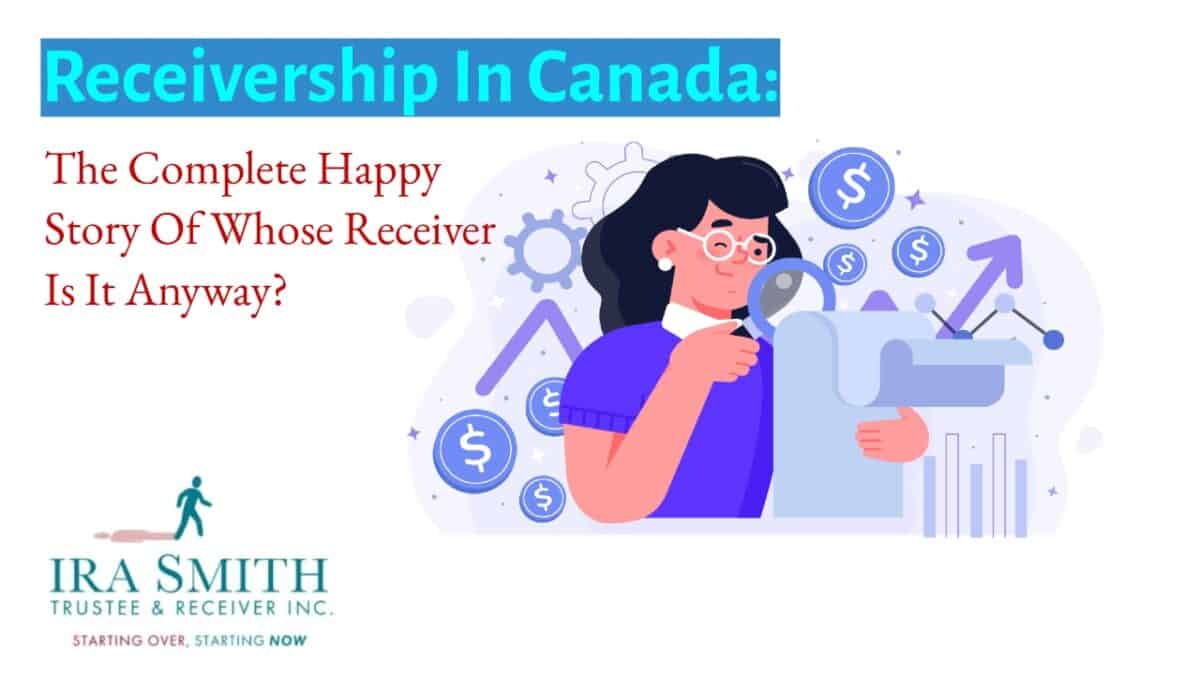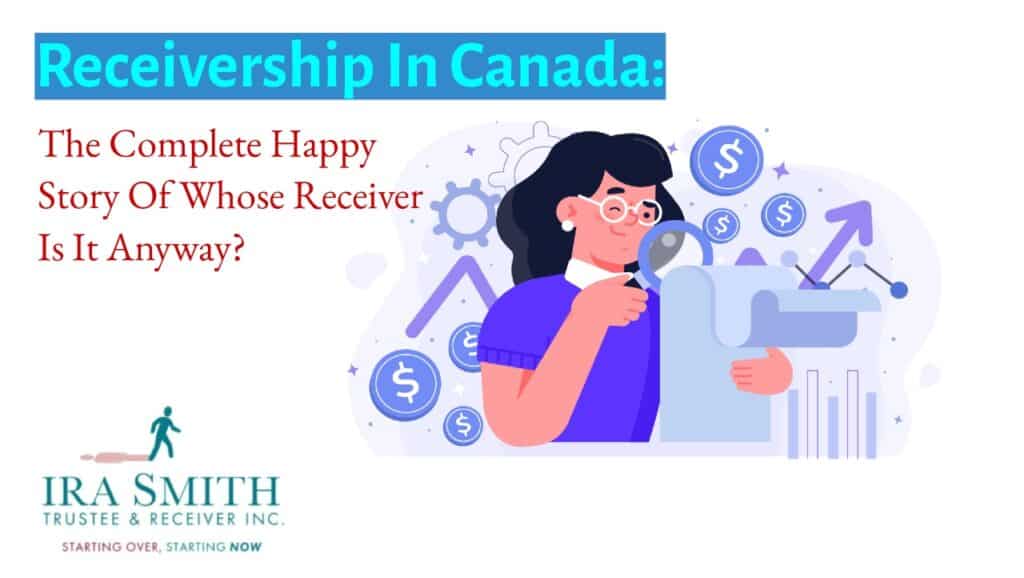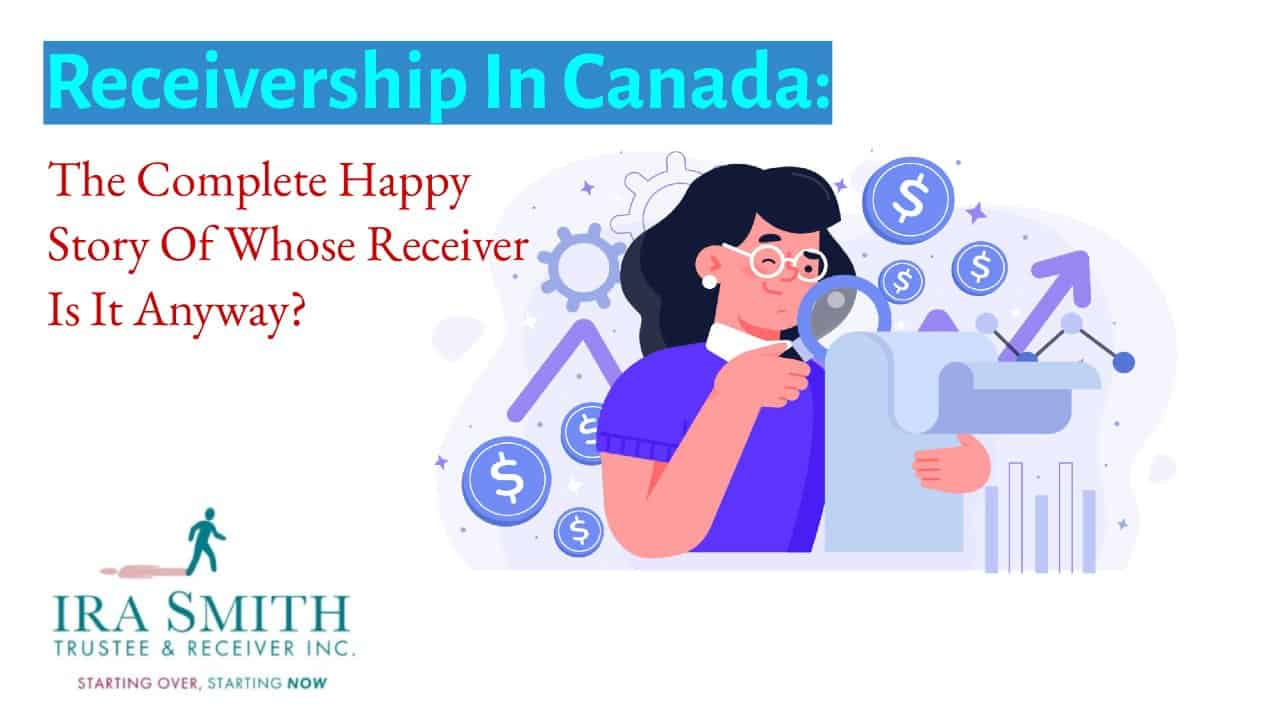company liquidation
Company Liquidation: Introduction
Company liquidation involves navigating a myriad of legal and financial obligations, particularly when a company is deemed insolvent. This process requires a thorough understanding of the duties and responsibilities of company directors, legal obligations in insolvency proceedings, and the roles of licensed insolvency trustees and the Court. Identifying insolvent companies and differentiating between secured and unsecured creditors are also fundamental aspects of the liquidation process.
In the fast-paced and competitive world of business, trust and collaboration are often the key ingredients for success. The recent legal case of Srivastava v. DLT Global Inc. 2023 ONSC 7103 (CanLII) serves as a powerful reminder of just how crucial these elements are in maintaining a thriving business. By delving into the details of the case, I explore the consequences of a breakdown in trust and collaboration and highlight the lessons that can be learned from this real-life scenario.
Join in this Brandon’s Blog Post as I explore the decision-making process in company liquidation, from understanding the options to implementing the liquidation strategy. We will also discuss the personal and legal ramifications, covering topics such as personal liability for business owners and directors, voluntary versus compulsory liquidations, and the voluntary liquidation process.
Whether you’re a business owner facing insolvency or a professional seeking insights into company liquidation, this article will provide valuable information to navigate the complex landscape of liquidation proceedings in Ontario.
Company Liquidation: Understanding the Basics
Company liquidation is a critical process for closing a limited company that either can no longer meet its financial obligations or if solvent, cannot continue due to other reasons. When a business undergoes liquidation, its assets are sold off, and the proceeds are used to pay back outstanding creditors.
There are two predominant types of company liquidation: voluntary and compulsory. Voluntary liquidation, which may be initiated by the shareholders or a court order, is often chosen when a company is solvent but burdened by debts. Compulsory liquidations happen through a court order when a company can either no longer pay its debts or, management is dysfunctional and can no longer work together to properly wind up the corporation and its business.
Liquidation proceedings are typically overseen by a licensed insolvency trustee. Company directors must comply with legal obligations during this process to avoid personal liability, particularly if they have given a personal guarantee for business debts.
A common cause for company liquidation is a significant drop in business, such as the loss of a major contract. Although liquidation can entail substantial costs, options exist even for companies without assets. Business owners must seek expert advice to ensure a smooth transition during the liquidation process. Here’s a simplified overview of the liquidation process:
- Decision to liquidate (voluntary or court-ordered)
- Appointment of a licensed insolvency practitioner
- Asset liquidation
- Settlement of debts with creditors
- Redemption of shares to the extent there is cash to do so
- Dissolution of the company

Company Liquidation: Understanding Insolvency in Canada
In Canada, insolvency is a legal term indicating a company’s financial distress, where a business is unable to meet its obligations as they come due, or ceases to pay current liabilities during normal operations. This situation often leads to company liquidation or other forms of bankruptcy proceedings governed by various statutes, including the Bankruptcy and Insolvency Act (BIA), the Winding-up and Restructuring Act, and the Companies Creditors Arrangement Act (CCAA).
Conversely, insolvent companies are subject to the aforementioned insolvency laws, which set out the protective legal framework allowing for a fair and orderly process of winding up a company’s affairs and distributing its assets. Insolvency laws in Canada are designed not only to adjudicate the distribution of company assets but also to provide possible recovery pathways for financially distressed businesses.
Identifying Insolvent Companies
Insolvent companies are characterized by their inability to discharge their financial liabilities as they become due. A more comprehensive view of insolvency includes the scenario where the total liabilities of a company exceed the fair valuation of its assets, suggesting that even the sale of all its assets would not cover the outstanding debts.
It is therefore essential for business owners and company directors to recognize the early signs of insolvency and to understand the consequences it may have for the future of their ventures. Identifying an insolvent company promptly is critical as it enables directors to take necessary action to either revive the company or initiate an appropriate exit strategy.
Duties and Responsibilities of Company Directors in Insolvency
When a company is facing insolvency, directors hold increased responsibilities and must pivot their focus to prioritize the interests of their creditors. This can involve refraining from incurring additional debt, avoiding transactions that undervalue company assets, and ensuring that no further detriment is caused to the financial standing of the creditors. Failure to act responsibly in the face of insolvency can result in allegations of wrongful or even fraudulent trading, potentially leading to personal liability for the directors. Timely, responsible action by directors is essential for limiting potential damages and preserving the trust and rights of creditors involved.
Legal Obligations in Insolvency Proceedings
The liquidation process for insolvent companies in Canada involves stringent legal obligations and is closely monitored by the courts. Directors must comply with laws set forth by the Bankruptcy and Insolvency Act or engage in processes like Company Creditors Arrangement Act proceedings, which offer an alternative to outright liquidation. In practice, the process is administered by a court-approved licensed insolvency practitioner (IP) who oversees the liquidation of assets, repayment of creditors, and an investigation into the reasons for the company’s failure, including examining the conduct of its directors.
Commencing company liquidation does not automatically cancel existing contracts; however, the entity in liquidation has statutory provisions under the Bankruptcy and Insolvency Act to terminate agreements that are no longer viable or beneficial.
Directors must understand their legal obligations and the procedural steps involved to ensure that they comply with the law and mitigate any risk of personal liability. The role of IP is pivotal in managing the process to achieve an equitable outcome for all parties and to facilitate a lawful and orderly conclusion to the company’s affairs.
Company Liquidation: The Role of Insolvency Practitioners
A Licensed Insolvency Trustee (LIT) are professionals licensed, authorized and supervised by the Federal Government to act concerning an insolvent individual, partnership, or company. These specialists take control of businesses that face financial difficulties to achieve the best possible outcome for shareholders, board of directors, employees, and – most significantly – creditors. Their expertise is essential in navigating the complex process of business liquidation including the sale of assets.
LITs meticulously itemize business expenses and assess the value of remaining assets when a business is ending. This is a vital step in determining how best to distribute assets among creditors. They are also responsible for conducting thorough investigations into why a company failed, examining the conduct of its directors, and sometimes reviewing the actions of third parties, like creditors.
The process they oversee – whether it’s a voluntary company liquidation or an involuntary liquidation – adheres to a strict legal hierarchy for repaying creditors. This ensures a clear and equitable distribution of assets, even though unsecured creditors may receive little to no return. The ultimate aim of an insolvent liquidation, guided by the LIT, is to provide a dividend to all classes of creditors to the extent that the company’s assets allow.
The Official Receiver and their Role in Liquidation Proceedings
The Official Receiver is a local public official within the Federal Office of the Superintendent of Bankruptcy. They play a pivotal role in managing the insolvency process in Canada. This includes setting standards, providing directives to LITs on how to proceed in certain situations and overall supervisory responsibility of LITs.
Secured Creditors vs Unsecured Creditors: What You Need to Know
In the hierarchy of repayments during a company liquidation, understanding the distinction between secured and unsecured creditors is crucial. Secured creditors are those with a legal claim on assets, often due to a lien or a security interest that guarantees their investment. Should a company dissolve, these creditors are prioritized to receive payment from the sale of the secured assets. Examples include lenders who financed company property or equipment.
On the other hand, unsecured creditors do not have this collateral backing. They include entities like credit card companies or suppliers with outstanding invoices. Once the secured creditors are paid, unsecured creditors fall next in line for any remaining funds, though often recovery rates are low or nonexistent.
Employees, as stakeholders, are also categorized as unsecured creditors, but may be prioritized differently depending on the jurisdiction and specific liquidation laws. In bankruptcy, secured creditors may take control of pledged assets to offset their losses, while unsecured creditors must wait to see if there are any funds left after the liquidation of unpledged assets.
Understanding these classifications is paramount for anyone involved in a company liquidation, as they dictate the order of payments and potential recovery. This knowledge can influence decisions made prior to and throughout the liquidation process, impacting all parties involved, from the business owner to the smallest creditor.
Creditor Type | Description | Recovery Source | Priority in Company Liquidation |
|---|---|---|---|
Secured | Creditors with a legal claim on assets (e.g., banks have taken a security interest for their loan, property liens) | Sale of specific collateral | High |
Unsecured | Creditors without a claim on assets (e.g., suppliers, credit card companies) | Remaining business assets after secured debts are paid | Lower |
By managing secured and unsecured creditors efficiently, Insolvency Practitioners can ensure a fair and lawful distribution of a company’s remaining assets, while acknowledging the varying levels of risk each creditor assumed.

The Company Liquidation Process: From Decision-Making to Implementation
The journey of company liquidation begins with a crucial decision-making phase, a stage where the future of a business and its stakeholders hangs in the balance. Whether a company opts for voluntary liquidation as part of a strategic exit strategy or faces the harsh reality of insolvency, the liquidation process demands a careful, planned approach to implement.
A solvent company considering voluntary company liquidation might be doing so for reasons such as the directors’ retirement or a strategic decision that the business has run its course. On the contrary, a liquidation of the assets of an insolvent company is triggered when a company cannot meet its financial obligations and must cease operations. In both cases, engaging professional advisers, being a LIT and a lawyer early in the process, can offer guidance through each phase, from the planning stages to the final dissolution of the company.
When the voluntary liquidation process is chosen, a company can prepare in advance, making for a more orderly and manageable closure. This method is less intrusive compared to a court-imposed compulsory liquidation following a creditor’s application. Throughout the process, the appointed insolvency practitioner works to sell off assets and settle debts, culminating in the formal winding up of the company.
In the event of an involuntary company liquidation, the proceedings begin following a winding-up petition from creditors. Legal mandates spell out the steps to be taken, from appointment of a liquidator to notifying and paying out creditors. The process may differ slightly from province to province where specific local laws affect the liquidation process.
In either scenario, the overarching goal is to handle assets and debts in conformity with legal and ethical obligations, and ultimately, to provide clarity and closure to all parties involved.
Making the Decision to Liquidate: Understanding the Options
When the decision looms to liquidate a company, it’s paramount for business owners to understand their options. A company’s status—solvent or insolvent—plays a pivotal role in determining the path taken in liquidation. Solvent companies generally have the luxury of choice, where directors may opt for a company liquidation as an exit strategy when the business has fulfilled its purpose or due to retirement.
Alternatively, for insolvent companies, the decision is less voluntary and often more urgent. Directors may initiate a liquidation to preempt spiralling debts and legal actions by creditors, or they may find themselves in the throes of a bankruptcy protection filing, where a court determines what will happen with the business.
The voluntary initiation of a company liquidation before reaching a crisis point can be less traumatic for a company and its personnel, allowing the liquidator to manage a planned and orderly process.
Company Assets and Outstanding Debts: Navigating the Financial Obligations
Once a company enters the liquidation phase, addressing the financial aspects follows swiftly. This involves a comprehensive accounting of company assets and a thorough evaluation of outstanding debts. The liquidator’s role here is integral. They’re tasked with the identification and valuation of all company assets, assessing business assets like inventory, property, and machinery. Following the liquidation sale, they oversee the distribution of proceeds to creditors, prioritizing secured over unsecured creditors, with any excess then directed to shareholders or the owner.
The focus shifts to the company’s debts, with secured creditors receiving payment first due to their collateral backing. Unsecured creditors, such as trade creditors, are then considered. Insolvency practitioners navigate these waters, ensuring a fair and legal conclusion is reached, even as unsecured creditors may recover only a fraction of what is owed if anything at all.
The Sale of Business Assets and the Exit Strategy
The culmination of a liquidation process lies in the sale of business assets—an exercise aimed at converting the company’s holdings into liquid capital to settle its liabilities. Whether the liquidation is voluntary or a compulsory measure, the end goal remains the same: to conclude the business’s affairs in an orderly and effective manner. For company stakeholders, this can often mean selling off all components of a business—stock, fixtures, equipment, and even intellectual property.
Business owners may mark the liquidation of assets as a significant part of their exit strategy. Especially in a voluntary company liquidation, it allows them to retire, recalibrate, or move on from the company in a structured and anticipated way. Conversely, in an insolvency scenario, liquidation acts as a critical means to mitigate the impact on creditors, shareholders, and the business reputation.
By converting assets into cash, liquidation can fulfill outstanding financial obligations and, in some fortunate cases, result in a surplus for the company’s shareholders. Regardless of the circumstances, the conclusive act of selling off assets and settling the company’s affairs offers a clear yet often bittersweet period of transition for those involved. Whether it will be a long or shorter period of transition depends on the complexities of the business in company liquidation.

The Personal and Legal Ramifications of Company Liquidation
Company liquidation, whether voluntary or involuntary carries significant personal and legal ramifications that extend beyond the immediate dissolution of business operations. Directors and business owners need to be cognizant of the implications of liquidating their company, as the consequences of failing to adhere to legal requirements can be severe.
Understanding Personal Liability: The Impact on Business Owners and Directors
In the event of a company’s insolvency and subsequent liquidation, the directors’ conduct leading up to this point comes under scrutiny. Directors of insolvent companies must adhere to high standards of corporate governance, and failing to do so may result in personal liability. This scrutiny is aimed at uncovering any wrongful or fraudulent trading activities. If discovered, directors can be compelled to contribute to the company’s outstanding debts, significantly impacting their finances.
Moreover, if directors have provided personal guarantees for company borrowing, they can also be held accountable for these debts. This risk heightens the importance of seeking professional legal advice before initiating any company liquidation proceedings. A proactive approach, including ensuring that all debts and obligations are satisfied, protects business owners from the pitfalls of personal liability.
Finally, directors are liable for any unpaid salary or wages and any statutory withholdings not remitted to the government.
Voluntary vs Compulsory Liquidations: Factors to Consider
Understanding the difference between voluntary and compulsory liquidation is paramount for any business owner or director contemplating the end of their company’s operations. In voluntary liquidation, which requires a special resolution and the consent of shareholders, the business can be wound down in an orderly fashion, assets sold off, and creditors paid in an agreed-upon order. This option puts the business in control of its exit strategy.
Compulsory company liquidation, on the other hand, is not within the company’s control and occurs when economic conditions, company regulations, and financial distress lead to a court order forcing liquidation. Such unfavourable circumstances often stem from insolvency and more often than not, failure to fulfill legal obligations. Compulsory liquidation subjects the company to a court-appointed liquidator’s oversight, who will distribute assets to satisfy creditors without the company’s input in the order of repayment.
Navigating the Voluntary Liquidation Process: From Special Resolution to Finalization
The voluntary liquidation process is initiated by a company’s shareholders via a special resolution and is a methodical path toward winding down company affairs. It begins with a formal decision to cease operations, involves reaching out to a licensed insolvency practitioner, and requires calculated steps to manage the cessation of business affairs.
After shareholders’ approval, company assets are assessed and sold to pay debts. Secured creditors are prioritized, followed by unsecured creditors. Any remaining funds are then distributed among stakeholders or redirected towards the business owner’s subsequent ventures. Once all financial obligations have been met, the company is formally dissolved, marking the completion of the company liquidation process and providing a clear endpoint to the company’s existence.

Company Liquidation: The Importance of Trust and Collaboration in Business – Lessons from the Srivastava v. DLT Global Inc. Case
I won’t go into all the details of the case, but rather, provide an overview of the important points to be taken away from this legal battle. You can read the entire judge’s decision by clicking on this link. The case revolves around Neeraj Srivastava, a co-founder and former director of DLT Global Inc., and his application to wind up the company. The court ultimately dismissed the application, but the underlying issues uncovered shed light on the critical role of trust and collaboration in business relationships.
Background
Mr. Srivastava’s application was based on the argument that DLT Global could not continue its business due to significant liabilities. He claimed that they faced financial difficulties, had an unsustainable burn rate, and engaged in extensive litigation. These issues, according to Mr. Srivastava, justified the winding up of the company.
Trust and Collaboration
A breakdown in trust and collaboration between Mr. Srivastava and his co-founder, Loudon Owen, emerged as a central issue in the case. Mr. Srivastava alleged that his reasonable expectations as a co-founder and shareholder were not met and that he was unfairly treated by DLT Global. On the other hand, DLT Global argued that Mr. Srivastava engaged in misconduct and threatened to harm the business.
Lessons Learned
1. Clear Communication and Expectations: The Srivastava v. DLT Global Inc. case underscores the importance of clear communication and setting realistic expectations from the outset of a business venture. It is crucial for all parties involved to have a shared understanding of their roles, responsibilities, and the direction of the company.
2. Building and Maintaining Trust: Trust is the foundation of any successful business relationship. It requires open and honest communication, transparency, and a mutual understanding of values and objectives. Without trust, collaboration becomes challenging, and the business may suffer as a result.
3. Resolving Conflicts Effectively: Conflicts are inevitable in any business relationship. However, it is how these conflicts are resolved that can make or break a partnership. By adopting a collaborative and problem-solving approach, parties can find mutually beneficial solutions and prevent the escalation of disputes.
4. Seeking Alternative Remedies: The Srivastava v. DLT Global Inc. case highlights the importance of exploring alternative remedies before considering the drastic step of winding up a company. Parties should consider mediation, negotiation, or other dispute resolution mechanisms to address their grievances and protect their interests.
Company Liquidation: Closing Thoughts
The Srivastava v. DLT Global Inc. case serves as a cautionary tale for businesses about the criticality of trust and collaboration. It emphasizes the need for clear communication, building and maintaining trust, effective conflict resolution, and exploring alternative remedies before resorting to extreme measures. By prioritizing these aspects, businesses can foster a healthy and productive environment that enables growth and success.
In conclusion, the lessons learned from this case remind us that trust and collaboration are not just buzzwords but essential components of any thriving business. By embracing these values, entrepreneurs and business leaders can create a solid foundation for long-term success, even in the face of challenges. Let us take these lessons to heart and build businesses that prioritize trust, collaboration, and mutual respect.
I hope you enjoyed this company liquidation Brandon’s Blog. If you or your company are struggling with managing overwhelming debt in this high-interest environment, don’t worry – there are some things you can do to take control of the situation.
Individuals and business owners must take proactive measures to address financial difficulties, consumer debt and company debt and promptly seek assistance when necessary. It is crucial to recognize that financial stress is a prevalent concern and seeking help is a demonstration of fortitude, rather than vulnerability. Should you encounter challenges in managing your finances and find yourself burdened by stress, do not delay in pursuing aid.
Revenue and cash flow shortages are critical issues facing people, entrepreneurs and their companies and businesses with debt problems that are in financial distress. Are you now worried about just how you or your business are going to survive? Are you worried about what your fiduciary obligations are and not sure if the decisions you are about to make are the correct ones to avoid personal liability? Those concerns and more associated with your company debt are obviously on your mind.
The Ira Smith Team understands these financial health concerns. More significantly, we know the requirements of the business owner or the individual who has way too much financial debt. You are trying to manage these difficult financial problems and you are understandably anxious.
It is not your fault you can’t fix this problem on your own and it does not mean that you are a bad person. The pandemic has thrown everyone a curveball. We have not been trained to deal with this. You have only been taught the old ways. The old ways do not work anymore. The Ira Smith Team uses innovative and cutting-edge methodologies, to adeptly navigate you through the intricacies of your financial challenges, ensuring a resolution to your debt-related predicaments without resorting to the rigours of the bankruptcy process. We can get you debt relief now!
We have helped many entrepreneurs and their insolvent companies who thought that consulting with a Trustee and receiver meant their company would go bankrupt. On the contrary. We helped turn their companies around through financial restructuring.
We look at your whole circumstance and design a strategy that is as distinct as you are. We take the load off of your shoulders as part of the debt settlement strategy we will draft just for you.
The Ira Smith Trustee & Receiver Inc. team understands that people facing money problems require a lifeline. That is why we can establish a restructuring procedure for you and end the discomfort you feel.
Call us now for a no-cost consultation. We will listen to the unique issues facing you and provide you with practical and actionable ideas you can implement right away to end the pain points in your life, Starting Over, Starting Now.





